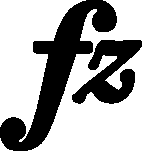



Verbal indications
|
b. 1
|
composition: Op. 28 No. 17, Prelude in A♭ major
..
According to us, the fact that the more specific tempo indication was abandoned in the final version of the Prelude may mean that the shape of the piece had crystallized – the double indication of FCI actually introduces an element of uncertainty, which suspends the tempo of the piece somewhere between Allegretto and Andantino. category imprint: Differences between sources issues: Changes of tempo markings |
|||||
|
b. 19-23
|
composition: Op. 28 No. 17, Prelude in A♭ major
..
If FCI accurately represents the notation of [AI], the stimulus to begin the crescendo was initially the five-quaver ascending L.H. sequence in b. 20. According to us, this version may be considered an acceptable variant; on the basis thereof, one can also shape accordingly the course of the crescendo starting – in accordance with the main text – in b. 19. category imprint: Differences between sources; Corrections & alterations; Source & stylistic information |
|||||
|
b. 24-25
|
composition: Op. 28 No. 17, Prelude in A♭ major
..
The category imprint: Differences between sources; Corrections & alterations; Source & stylistic information issues: Corrections in A , Deletions in A |
|||||
|
b. 65
|
composition: Op. 28 No. 17, Prelude in A♭ major
..
The missing "I remember once when I was playing the 17th Prelude of Chopin, Madame Dubois said that Chopin himself used to play that bass note [A Fontana, who knew the Prelude from a still earlier version, apparently memorized that effect, since he added * I. J. Paderewski, Mary Lawton, The Paderewski Memoirs, London 1939, p. 154. category imprint: Differences between sources issues: Errors of A , Fontana's revisions |

 and
and  hairpins, which were initially written there (see the next note).
hairpins, which were initially written there (see the next note).  in
in  in
in  1] in the final section (in spite of playing everything else diminuendo) with great strength. He always struck that note in the same way and with the same strength, because of the meaning he attached to it. He accentuated that bass note—he proclaimed it, because the idea of that Prelude is based on the sound of an old clock in the castle which strikes the eleventh hour. [...] Chopin always insisted the bass note should be struck with the same strength—no diminuendo, because the clock knows no diminuendo.”
1] in the final section (in spite of playing everything else diminuendo) with great strength. He always struck that note in the same way and with the same strength, because of the meaning he attached to it. He accentuated that bass note—he proclaimed it, because the idea of that Prelude is based on the sound of an old clock in the castle which strikes the eleventh hour. [...] Chopin always insisted the bass note should be struck with the same strength—no diminuendo, because the clock knows no diminuendo.”